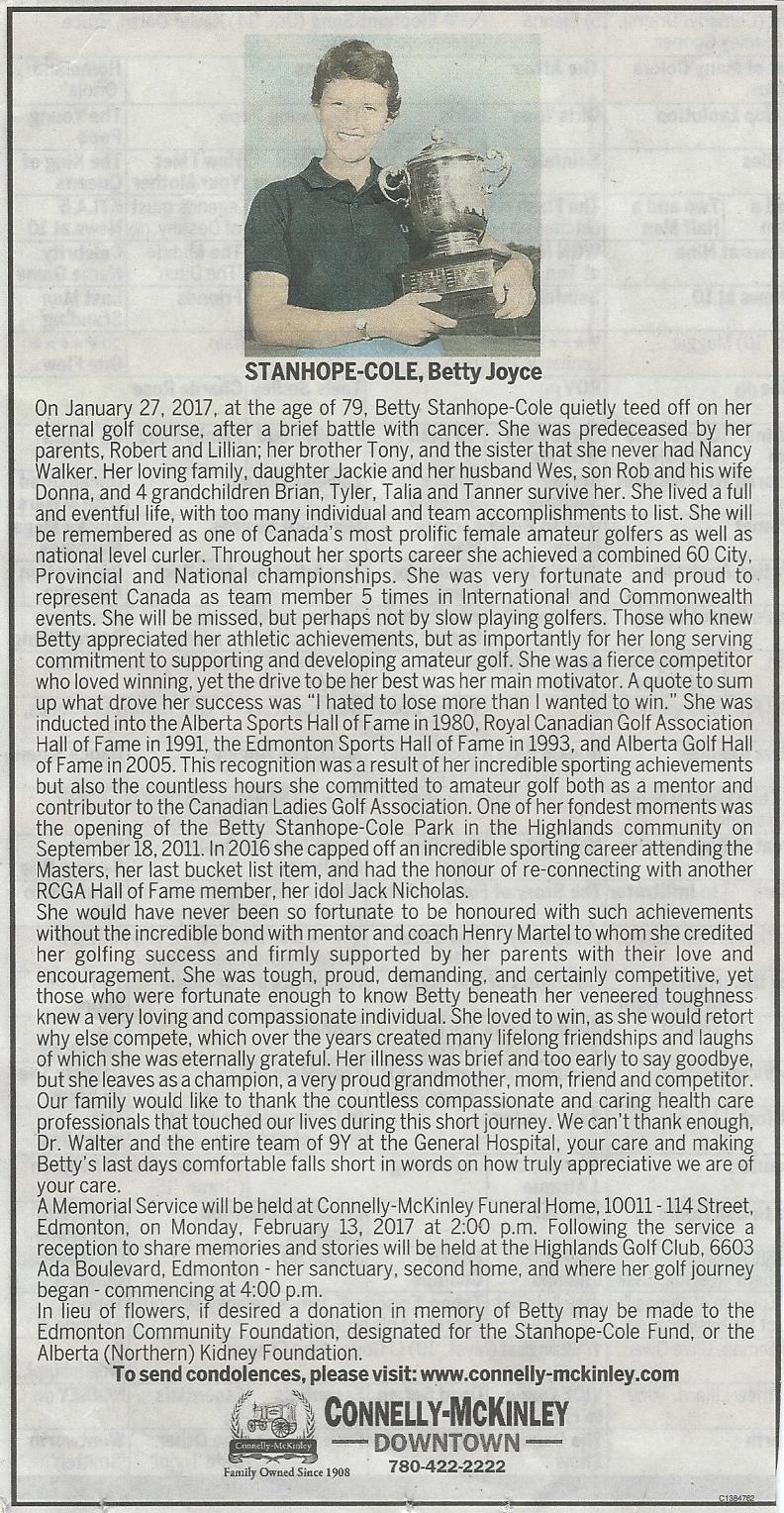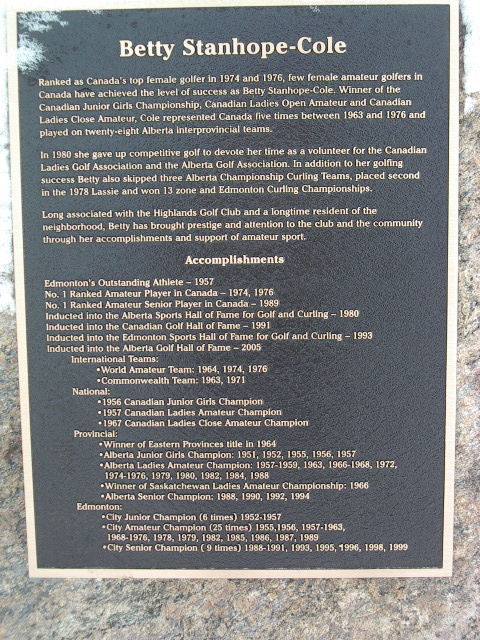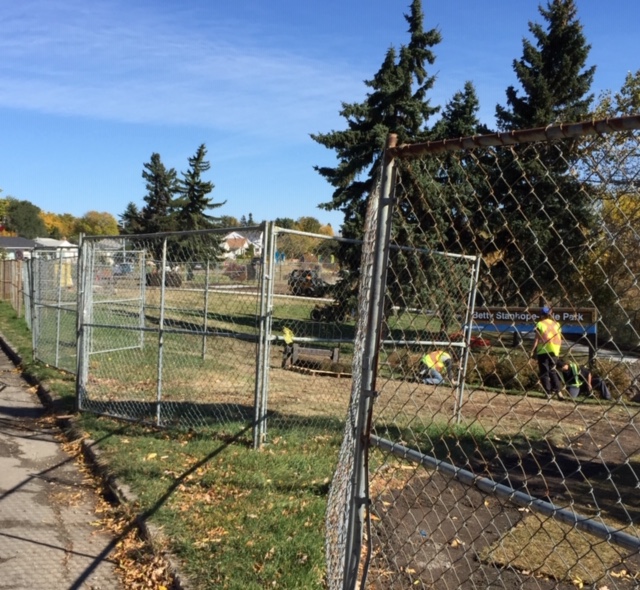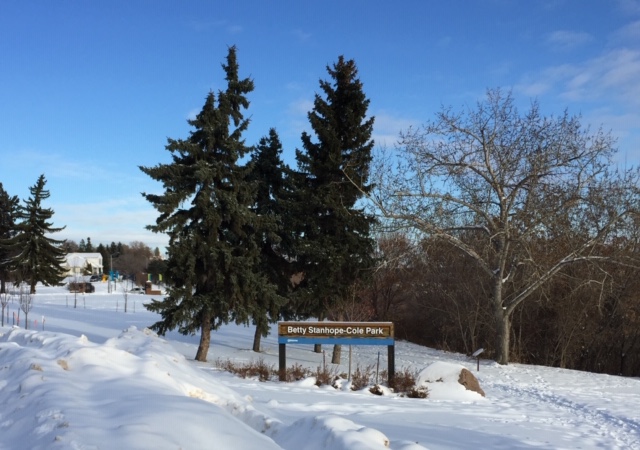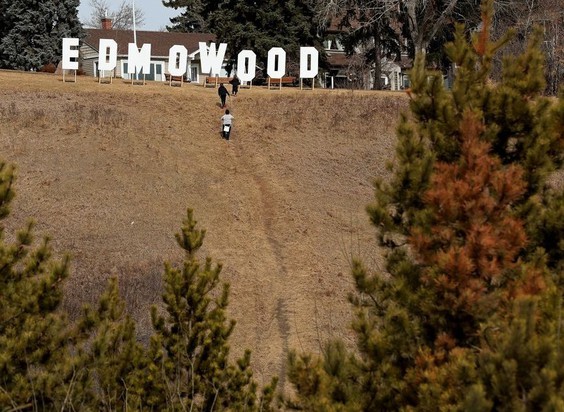|
|
| OUTSIDE OF THE 'VILLAGE'- BELLEVUE |
|
7543-112 Avenue NW APARTMENT BLOCK |
|
|
|
 |
|
 |
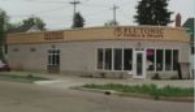 |
|
|
c. 2005-2010 Hair Rescue c. 2002 Hair Artistry 1940-64 Parkview Red and White Grocery 1938-40 James Warmington Grocery 1932-37 Park Grocery 1921-31 Hambley Confectionery Store |
|
|
HIGHLANDS VILLAGE-YEARS BUILT & ASSESSMENT VALUES.
As an 'item of interest' details regarding the date of erection of the building and the assessment value of the building as per the 2011 Assessment as been included at the end of this document. In checking city records some of the dates did not ring true... for example 6417-112 Avenue was shown as being built in 1975 (new building date)(NBD)... and those of you who have lived in the Highlands will know is not quite kosher. A check with the Assessment Branch revealed that the date of 1975 was the date the building was extensively renovated and thereby became a 'new' building...where possible the initial date of building has been included with the new building date in parenthesis 5335-39-112 Avenue Built (B) 1951, Assessed value (AV) 2011-$482,000.00 6507-112 Avenue B-1932 AV 2011-$207,000.00 11155-65 Street B-1946 NBD-1975 AV-2011-$420,000.00 6410-112 Avenue (now includes 6420-112 Avenue) B 1930 NBD 1940 AV-2011-$596,500.00 11204-65 Street B-1937 AV-2011-$191,500.00 6506 Address no longer used.
|
| Bellevue area stores since gone
Business Heritage The following stores were once in Bellevue. We can trace the demise of some to the 1960's construction of what is now Wayne Gretzky Drive. 6924 |
| 1949-1962 Canadian Imperial Bank of Commerce |
|
1949:CANADIAN BANK OF COMMERCE |
1950: CANADIAN IMPERIAL BANK OF COMMERCE |
1950: BANK INTERIOR |
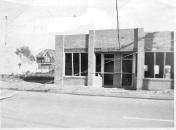 |
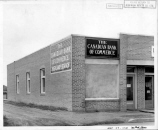 |
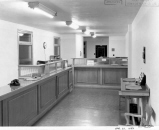 |
|
(Approved as Borden Park September 9, 1919) (7507- Borden Park Road NW- covers 20.3 ha or more or less depending on the account you read)
Material supplied by Community Services, City of Edmonton)
Originally known as the East End City Park, this public park was established in 1906. After a visit to Edmonton by Canada's eighth Prime Minister, Sir Robert Borden, in 1914, the name of the park was changed to Borden Park. The park has been a popular destination for Edmontonians over the past century. Sundays at the park once drew crowds of up to 7,000 people for picnics, baseball, cricket and of course, the amusements. Several amusement rides were added to the park in 1915, including a carousel, roller coaster, and tunnel of love. The giant wooden roller coaster, known as "The Green Rattler", operated until it was dismantled in 1935. Another popular attraction was "The Old Mill", a tunnel of love that was destroyed by fire in the 1930's. One of Edmonton's first pools opened here in 1924, offering change rooms, lifeguards, and risqué "mixed bathing" (men and women swimming in the same pool). In 1929 a tea room was opened in the park. Borden Park was also the location of Edmonton's first Once 148 acres in size, the park has lost land over the years to developments in the area, particularly the expansion of the exhibition grounds at Northlands.
BORDEN PARK, named in honour of Sir Robert Laird Borden (1854-1937), the eighth prime minister of Canada, has been an important Edmonton attraction for almost 100 years. In the early part of the last century, as many as 7,000 people would pour into the park on a Sunday to enjoy picnics, baseball and music. Originally known as East End City Park, it was established in 1906. The 21.99-ha. park was renamed following Prime Minister Borden's visit to Edmonton in 1914. Borden was elected prime minister in 1911 and held office until his retirement in 1920. One of the city's first three swimming pools was situated in Borden Park. As the Edmonton Journal noted in an By the mid-1930's, however, the Old Mill had been destroyed by fire and the rides were showing their age.
In 1957, the author arrived in Edmonton and Borden Park still had the zoo. He is quite sure most people who saw the rather wretched display were ashamed of it and shed no tears when it finally closed. When the zoo opened the best of intentions may have been evident, but one would guess by the mid-fifties its time was over and it was rightfully closed. Many hours were spent in the park with his growing family, visiting the concession, the pool and later the grandstand. Again, this park is a valuable asset to the area. Others have enjoyed ball games at the diamond at the east end of the park and a 'ratttling' good game of Of course the park contains trees and the author would merely say the (Name) Park has lots of lovely trees. But that becomes repetitive if there are too many parks! Darrell Nordell, Community Services, City of Edmonton, saved his hide, as it were, and provided information on the trees in not only Borden Park but many of the others.. The list was of a survey taken in 2007 and showed there were at least 19 varieties of trees and shrubs in the park, including but not limited to, blue spruce (most), elm, ash, pines, maples, prunus, larch, linden, poplar, malus, hawthorn, birch, willow, olive, fir, sorbus apple, mayday, Bur oak Ohio buckeye and juniper! Recent (2008./2009) will have reduced the total to some extent. The total number of trees is over 1300. The City has planned many changes for Borden Park, these plans can be viewed by clicking here
August 28, 2014: 90 years ago the following article appeared in the Edmonton Journal. There is nothing edifying about the article and it appears here simply because it happened and is part of the history of Borden Park. Permission to use has been sought from the author of the present article at the Edmonton Journal
Commissioned by The Edmonton Arts Council and completed on June 18th, 2014 Design & computation: MARC FORNES & THEVERYMANY™ Engineering: Will Laufs, LaufsED Vaulted Willow is an architectural folly exploring lightweight, self-supported shells through the development of custom computational protocols of structural form-finding and descriptive geometry. The project's aim is to resolve and delineate structure, skin and ornamentation into a single unified system. The overall morphology is the result of a reciprocal relationship encompassing experiments in non-linear architectural typology (multiple entries, distributed feet with branching and spiraling legs), structural differentiation (bifurcation of structural download forces, tighter radii of leg profiles for rigidity,...) and programmatic possibilities for a winding playground (hide and seek,...)
The stripe colors originate from Vaulted Willow's surrounding environment, though for it to be an iconic destination within Borden Park, the colors are pushed toward artificiality. The greens and blues blend into a synthetic magenta, overlapping to reveal a two-way Cheshire scheme. Design Development The project builds on the studio's long-term research into self-supported structures, lightweight monocoque shells made of a series of thin, planar elements proliferating through tangential continuity. The approach uses form-finding protocols to generate structures with extensive double curvature, inherently creating stiffness through geometry and eliminating the need for sub-structure. The studies elaborate on the 2D geometry of catenary curves by exploiting a computationally derived dynamic spring network with behavioral attributes. The springs come in various types (tensioners, straighteners,..), associated with multiple parameters (rest length, angle constraint, strength,..). The catenary network is first inflated normal to the ground plane and as a secondary process inflated outward, normal to the surface in order to achieve double curvature. The network inflation stagnates as forces equalize, resolving into an optimized structure. Tessellation considerations therefore have to be embedded within the topology of the system prior to the inflation process. Stripes located at the edge of the surface increase tab overlap to help transfer additional loads through lamination and increased connectivity. Porosity increases with height as the structural needs diminish, allowing more light to permeate the space. Running bonds split the stripes, shortening them to ease fabrication, assembly, and decrease material usage through more efficient nesting. Rivet density is also resolved relative to structural needs, with higher densities and varying configurations at bifurcation points, along the edges, and towards the base of the structure. The extensive, computationally driven, descriptive geometry protocol developed for the project embeds axis of bending, angle measurements, part nomenclature, and color information for each stripe. 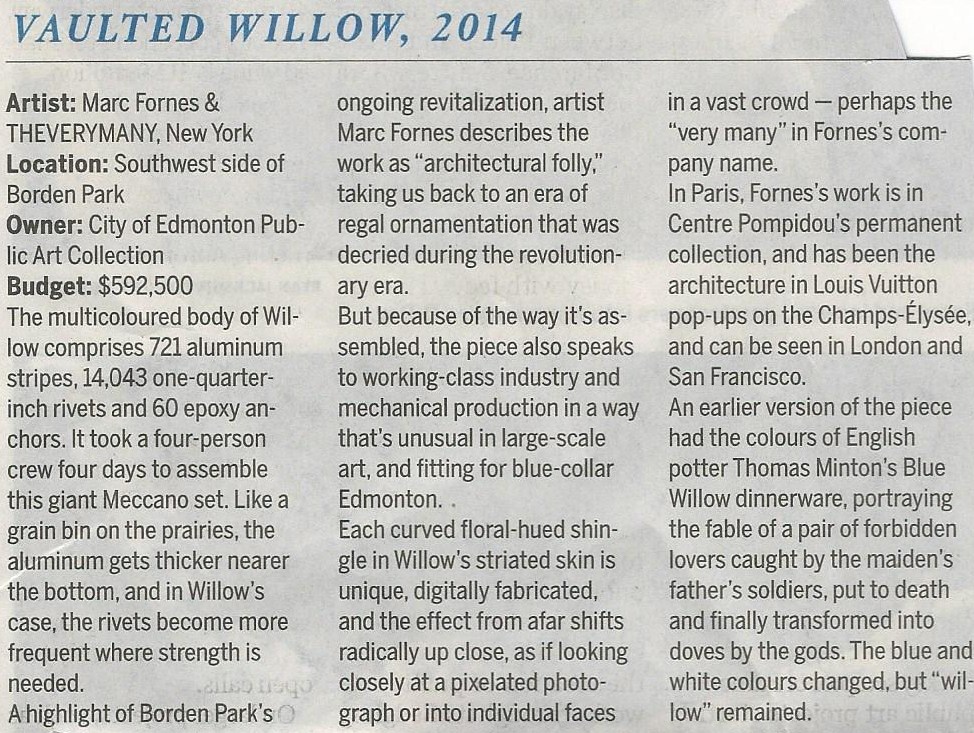
Article by Paula Simons May 18, 2017 Edmonton Journal
"This isn't a pool. It's more a natural swim environment," says Jesse Banford, director of facilityinfrstructure for the City of Edmonton Banford points proudly at the construction site at Borden park, when the construction team from Ellis Don is building a very 21st-century swimming hole-the first of its kind in Canada. Instead of using chlorine or salt to purify the water, this golden pond-with a budget of $14.5 million- will use a combination of sand and granite filters, aquatic plants, plankton and UV light to keep the water safe for the public. The area will feature both a shallow 150-square-metre wading pool for small children and a much larger pool-42 metres long, 16.8 metres wide and two metres deep-for swimmers to splash and play. The whole area will be surroind by 1,100 cubic metres, or 16,43 metric tonnes, of sand, quarried in Thorhild, along with 11 species of native plants to create the impression of being at the beach.
The pool was supoosed to be delivered last summer. But a massive redeslgn--necessitated by the need to bring down costs-delayed cojstruction. Now, crews from Ellis Don are hard at work putting up the Rundlestone walls, installing the filtration system and ordering the right sort of sand-not so light that is blows away, not so coarse that it's unpleasant underfoot. Banford says the city plans to do a 'soft open' this August to iron out the kinks and then to open in earnest for a full season next summer. "Because it's not a standard pool, we need to go through a lot of learnings" “Natural pools” like this have been common in Europe,especially Germany, for decades. But they’re new on this side of the Atlantic. The only project of this kind in North America is Webber pool, in Minneapolis. While it has won critical acclaim for its innovative design, it’s also had a series of operational problems. It opened two years late, and well over budget. (Although even then, it cost roughly half of what we’re spending here.) Last summer, its first full season in operation, it had to close multiple times because of elevated bacteria levels.
But Robb Heit, who's managing the project for the city, says Edmonton has tried hard to learn from the Minneapolis experiment. He himself went to swim in its natural pool last summer. "It was coool and clear as swimming in the Shuswap," says Heit. Edmonton's pool, which will be mainained at 24 to 25 C to reduce algae growth, will be similar, he says. "The water will be a little more turbid. You don't see drystal clear water you see in a chlorinated pool." This won't be a pool where you can dive or swim lenghts or take lessons. The cool temerature may discourage guests who prefer to laze in warmer water. Still, Banford believes the novelty, and the "green" pedigree will attract vistors, especially on the hottest summer days. "We're looking at it a more of a destination," says Banford. "It's just going to appeal to a certain demograpic. Families are going to come and check out th eonly natural pool in Edmonton.
I hope he’s right. After all, we’re spending $14.5 million — about twice what the city spent on the newish Queen Elizabeth Pool - to build something this finicky to run. Something, too, which probably won't have the populist appeal of a conventional pool I worry about ducks and geese and what they leave behind.I worry about swimmer’s itch and mosquitoes.I worry the pool’s filtration systems won’t be able to handle big crowds on hot days. I worry high bacterial counts may shut the pool periodically, as has happened in Minneapolis. I worry we may be building a big fancy slough in the middle of our city. .And yet, in a city that has four other conventional outdoor pools, in a city with precious few beaches, there is something beguiling in the vision of an urban “lake” experience we can all share, within walking distance of two LRT stations, a magnet destination to complement the Borden Park sculpture garden. In 1924, the city opened its first “mixed pool” in Borden Park, where men and women could swim together. Borden Park is where Edmonton takes risks. Now, we’ll see how this one pays off. 100-year-old Borden Park reopens to the public S U SA N P E T R I N A Our revitalized 100-year-old Borden Park celebrated its official reopening on September 19. Many community residents joined staff from Northlands and the City of Edmonton, as well as a full slate of dignitaries, to celebrate that the park was once again open to the public. The event was hosted by Doug Costigan, Director of Northeast District Neighbourhoods, Parks and Community Recreation. Guest speakers Linda Cochrane and Katherine Kerr spoke to the project’s uniqueness both in construction and design features. Linda Cochrane, the Community Services General Manager, oversaw the project for several years from initial concept plans in 2010 through to completion. The budget was $9.5 million, with the Government of Alberta contributing more than $8.7 million from the Municipal Sustainability Fund. Major upgrades include new picnic shelters and upgraded site furniture, a formal garden with interactive fountains, a revamped playground themed to respect the historical fairground and Edmonton’s first zoo, more than 200 new trees, approximately two kilometres of new walkways, a new park pavilion, and a refurbished bandshell theatre. The last remaining piece of the revitalization plan is the redevelopment of the 88-year-old outdoor pool into the Borden Natural Swimming Experience, a natural pool that will be able to be used year-round for unique recreational opportunities. The pool is expected to open in summer 2017. Katherine Kerr, Edmonton Arts Council’s Public Art Director (and a community resident), spoke about the 12 art exhibits placed throughout the park and noted the impressive – and colourful – sculpture located along 112 Avenue, Willow by Marc Fornes. Located within the new pavilion is Carousel, an abstract mural by Nicole Galellis. Both pieces were commissioned by the Edmonton Arts Council through the city’s Percent for Art program; 10 other sculptures located around the park will be on display until 2016. Long-time Highlands’ resident and MLA Brian Mason, and City Councillor Tony Caterina spoke about the historic value and importance of the park to the vitality and cohesion of the surrounding communities. The park also holds value to the city as a whole, and these dignitaries emphasized the need for urban green space and places for citizens to gather. Go for a wander and get lost in the beauty of this lovely treasure of a park that’s so close to home. For more information on the revitalization and history of Borden Park, visit www.edmonton. ca/bordenparkrevitalization
Paul Simons, Edmonton, Journal May 17, 2018The long-awaited Borden Park natural swimming pool will welcome its first visitors at noon Wednesday following a hiccup involving a filtration system leak. The pool will be the first of its kind in Canada.Instead of using chlorine or salt to purify the water,aquatic plants, plankton and a combination of sand and granite filters will be used to keep the water safe.City staff posted plans for the grand opening on Facebook Sunday after cancelling the event in mid-June because crews had to dig up the filter tank to fix a leak.It was the latest delay for the project, which was initially set to launch in the summer of 2016 to become the city’s fifth outdoor pool. It features a shallow 150-square-metre wading pool for children along with a larger pool 42 metres by 16.8 metres and two metres deep.Surrounding the pools are 11 species of plants and sand to form a beach-like atmosphere. The final cost of the project is $14.4 million.
Paula Simons: Risk and rewards at revolutionary Borden Park Natural Pool Edmonton Journal Updated: July 9, 2018 The first thing you notice when you plunge into the new Borden Park Natural Pool isn’t the cold. (OK. Actually it is the cold. Because the pool doesn’t use any chlorine or salt, the water is only heated to a maximum of 23 C. When it hits that temperature, they turn off the heating system and rely on the sun to maintain or raise the temperature. The morning when I jumped in, the water was still a brisk 22.7 C.) But thPAULA SIMONS e second thing you notice? It’s the water itself.
On Wednesday, the Borden Park Natural Pool is scheduled to open to the general public — a mere two years and two months behind schedule. It’s the first pool of its kind in Canada and only the second one in North America. It’s modelled on natural swimming pools that are popular in Germany and Austria. Instead of chemical disinfectants, dechlorinated water is cleansed and purified though a series of sand and gravel filters and by the natural interactions of plants, algae and zooplankton. Walk into the enclosure and you see two pools for the general public — a tot’s wading pool, which is 0.6 metres deep, and a sloped-entry swimming pool, which goes down two metres deep at its deepest point. Both are surrounded by sandy “beaches” where people can build sand castles, sun bath in deck chairs, or play a little beach volleyball. There are also three separate “working” pools, the filtration ponds that are constantly cleaning the water of bacteria, viruses, phosphorus, and other micronutrients. Plants such as blue water iris, marsh marigolds, duckweed, water lilies, bladderwort and cattails oxygenate the water, filter the water, or provide habitat for the zooplankton which eat the bacteria. It’s a delicate balancing act. No one who uses the pool is allowed to use sunscreens that contain phosphorus or shampoos that use phosphorus. (And yes, they will check your beach bag on the way in.) Everyone is required to take a warm-water “soaking shower” so that they enter the water with their hair and bodies as clean as possible. You can’t wear cotton bathing trunks or cotton T-shirts or anything made of cotton at all. No more than 400 people can be in the water at any one time. And if the water temperature rises to 29 C on a hot, sunny day? The pool has to close. But if you follow the rules? You can be rewarded with a cool, refreshing lake-like swim. And if a little sand gets dumped in the pool along the way? Well, that helps to balance the system too. “Our motto is, ‘Keep it clean, keep it open,” said Cyndi Schlosser, the facility manager for the site. She and her staff test the water for biological contaminants three times a week on-site and send another two samples a week to Alberta Health Services for lab testing. Still, this is untried territory. Because this is the first pool of its kind in the province, there are no provincial regulations to govern it. The City of Edmonton and AHS are figuring it out as they go. It hasn’t been easy to get here. The $14.4-million project had to go back to the drawing board, literally, when the original design proved prohibitively expensive. It was supposed to open for trial runs last August, but wasn’t ready in time. It was supposed to open last month — but then the liner membrane on one of the filtration ponds was damaged and leaking and had to be repaired. So Wednesday’s grand opening has been long-awaited, not just by people who want to swim, but by the pool staff, too. Will it all work? I worry that managing the water quality, once the pool is filled with people, will be tricky. I worry that the pool, with its cooler water, will only be attractive and family-friendly on very hot days. This design is a real gamble. But oh, it’s beautiful. When you open your eyes underwater, and nothing stings and nothing burns. When you do a lazy breaststroke, and the water feels caressing on your skin. When you get out of the pool and your suit and your hair don’t have that chlorine smell. When you look onto the lush green of Borden Park, and imagine yourself on a sunny lakeshore, far from here. The pool is free for visitors this year. Why not go and make a splash?
“It’s always been our symbols. For this kind of thing it was like, the way (Toal) got them flying over the top to get to heaven, we all like to think our loved ones went to heaven, he just got it,” said Jane Orydzuk, president of VOH.Wednesday. Each side of the memorial also shows a message of acceptance and understanding: “You are not judged, you are not alone, and you are not misunderstood.” The unveiling of the sculpture was greeted by a round of applause and a shout of “Absolutely perfect” from the close to 70 people in attendance. “I’ve never built anything that’s had this much emotional weight attached to it where you’re actually doing something that really, really means something to someone who’s been through something that I would consider hell,” said Toal .Building the sculpture was a dream of Orydzuk, who first had the idea to get it built close to six years ago. Now that it’s built she said she hopes the sculpture will be able to help all Edmontonians who have lost loved ones to cope. Founded in 1995, VOH is a non-profit society designated to offer emotional support and information to those that have lost loved ones to violence. The sculpture was paid for by a family wishing not to be named that lost their daughter to violence.
AUGUST 2021 BORDEN PARK WINS AWARD
Borden Park in Edmonton, Alberta, is the winner of the 2021 Canada’s Best Restroom contest. Photo by David Bloom PHOTO BY DAVID BLOOM /Postmedia
|
||||||||||||||||||||
|
INFORMATION PROVIDED BY THE EVER HELPFUL CITY OF EDMONTON ARCHIVES.
JANE SALISBURY PARK: This is from our Names database and is also found in the book Naming Edmonton: Ada to Zoie: Jane Salisbury Park: Comprising approximately 0.50 ha in a portion of River Lot 26 and located south of 112 Avenue South and west of 76 street. In recognition of Jane Thompson Salisbury, a past grand matron of the Order of the Eastern Star (the women's auxiliary of the Master Masons). Salisbury was born in Quebec but came to Edmonton as a child. She joined the Order of the Eastern Star in 1953 and was grand matron from 1976 to 1982. Salisbury spent almost 30 years volunteering with the elderly who lived in this community. From 1949 to 1987 senior citizens were housed in cottages in this park area, it was a project run by the Order of the Eastern Star. Location: Cromdale neighbourhood
The park is small and offers very little in the way of 'facilities'. No children's swings, roundabouts or slides. There are but two benches. However what it does have to offer is solitude. During my two visits I found but one person in the park. The vista from either bench is not overpowering...in fact both look across a ravine... but that would be hard to detect from the benches as there is a row of shrubs that form a small barrier along the top edge of said ravine. This is Kinnaird Ravine. As an aside much culling of dead trees needs to be in the ravine. According to Randy Williamson, CBA, City of Edmonton Community Services Department there are approximately 88 trees in the park made up of many and various types of spruce, there are firs, lindens, larches, ash (two varieties) Mayday and Russian olive. The makeup of the trees is the standard for city parks. MORE ON JANE SALISBURY Life & Times: Jane Salisbury made the world a better place, always helping others Jane Salisbury spent the better part of her life caring for others. A dedicated volunteer, Mrs. Salisbury's work with the elderly, sick and poor was recognized by city council in 1990 with the dedication of Jane Salisbury Park, next to the Kinnaird Ravine in Cromdale. Mrs. Salisbury, 93, died Jan. 18 at the Allen Gray Continuing Care Centre in Edmonton of complications from cancer. "She was an extremely elegant and classy lady, but more than anything she was really giving of her heart," said Brenda Cotton, who as a child 30 years ago began her friendship with Mrs. Salisbury. Born Jane Thompson Millar in 1909 in Montreal, Mrs. Salisbury was brought to Edmonton as an infant. She earned a business certificate from Alberta College and briefly worked at the University Hospital, but as a wife and the mother of two sons, she dedicated herself to community projects and charitable work. A past grand matron of the Order of the Eastern Star, a women's group associated with the Master Masons Cotton remembers Mrs. Salisbury as feisty but ladylike, a throwback to a bygone era, who always sent thank-you notes, drank her coffee out of a porcelain cup and "dressed to the nines" in sparkly jewelry and other finery. "She was the kind of lady who, whenever she came to your house, she always brought a gift and it was always something that she made, either a cake or flowers that she grew," Cotton said. After winning her first battle with cancer in the early 1980s, Mrs. Salisbury volunteered at the Cross Cancer Institute, visiting cancer patients. She also visited the sick and elderly in nursing homes and hospitals around the city. "Whenever someone needed a helping hand, she was there," Cotton said. Diagnosed with spinal cancer and confined to a wheelchair in the last years of her life, Mrs. Salisbury offered to undergo painful experimental cancer treatments in the hope that it might help others in the future. "She wasn't good at focusing on herself at all, she was always focusing on someone else. She was someone who made the world a much better, kinder place," Cotton said. Mrs. Salisbury is survived by her sisters, Eleanor and Edith, and her many grandchildren, great-grandchildren, and great-great-grandchildren. And excerpts from: Slot machine fans will hear the clink of coins at Klondike Days (Edmonton Journal 1992)
Jane Salisbury wasn't happy about that, even as a small green tract abutting the Kinnaird Ravine at 76A Street and 111A Avenue (actually south of 112 Avenue South and 77 Street) now officially carries her name. "For myself I don't care," she said, of the event not being particularly marked by the media. "But I have grandchildren and great-grandchildren - and this is the heritage I am leaving them." Salisbury is a past grand matron of the Order of the Eastern Star (the female counterpart of the Master Masons), and was for 25 years chairman of a project carried on by the order at the current site of her park. From 1949 to 1987, the order leased the land from the city, built and administered five duplexes there for needy seniors. Salisbury is being honored by the city for volunteer work in many areas and causes additional to that - something that "has always been a part of my life," she said, since she came to Edmonton in 1911. She didn't want her age mentioned - "though," she chuckled, "when people see that 1911 and calculators are going to come out, real fast." Material from the Edmonton Journal Library. First article by Isabela Varela Jan 23, 2003, second article by Barry Westgate June 27, 1992.
|
||||||||||||||||||||
|
(7707 - 112 Avenue NW covering 1.33 ha) 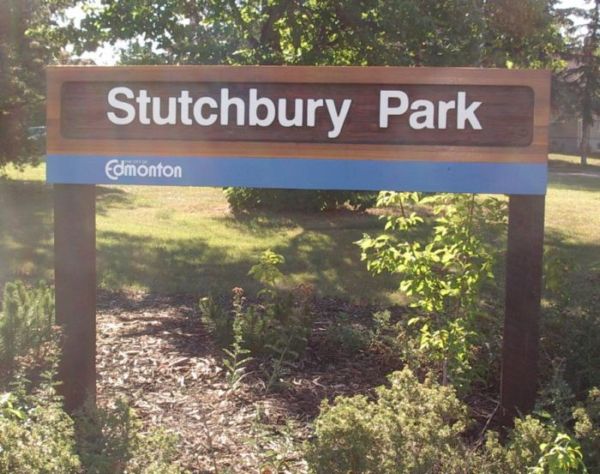 Memorial unveiled (possibly the Edmonton Journal August 2, 1960 from the City of Edmonton Archives) A 16-foot memorial honoring the late Howard Stutchbury, who, in 1902, helped found the Edmonton musical Festival, and in 1946 founded the Alberta Safety Council, was unveiled Saturday afternoon. Below, Miss Audrey Stutchbury, his daughter, unveils the memorial at Stutchbury Park, 112 Ave and 76 St. Looking on are Rev. Ray Leppard, of Redwater; James Falconer, chairman of the city's landmarks and archives committee; Mayor Roper; Garnet Kyle, city archivist; Hon. J. Percy Page, lieutenant-governor; Hon. R.D. Jorgenson, provincial welfare Minister, and Major Elmyr Stutchbury, son of Mr. Stutchbury
STUTCHBURY MEMORIAL UNVEILED
Tribute to a man prominent in cultural activates and safety education was paid Saturday afternoon by government, civic and Alberta Safety Council officials, as the Howard Stutchbury Memorial, 112 Ave. and 76 St. was unveiled. In a brief message before the memorial was unveiled by Miss Audrey Stutchbury, daughter of the late Mr. Stutchbury, Hon. J. Percy Page, Lieutenant-Governor of Alberta, called Mr. Stutchbury, a "servant of the public and a gentlemen in the true sense of the word". Officials pay tribute memorial was unveiled by Miss Audrey Stutchbury, daughter of the late Mr. Stutchbury, Hon. J. Percy Page, Lieutenant-Governor of Alberta, called Mr. Stutchbury, a "servant of the public and a gentlemen in the true sense of the word". Mayor Roper said Mr. Stutchbury did as much as anyone in Alberta to promote culture in the province. He added that city council was glad to provide land named Stutchbury Park, the three acre park in which the memorial is located.
The final speaker, Brig. J.C. Jefferson, chairman on the Alberta Safety Council, said that Mr. Stutchbury was an "inspiring leader: nothing was to much trouble or too difficult from him. He lived the philosophy of being his brother's keeper." Rev. Ray Leppard of Moore Memorial United Church in Redwater delivered the invocation. James Falconer, chairman of the city's landmark and archives committee, introduced the speakers. Also attending the ceremony were Garnet Kyle, city archivist, Major Elmyr Stutchbury and Ewert Stutchbury, sons of Howard Stutchbury. A native of England, Stutchbury came to Edmonton in 1902. Along with Vernon Barford, he founded the Edmonton Musical Festival in 1908, and with Mr. Barford, was the originator of the Canadian festival movement. A trade commissioner for the Alberta government from 1921 until 1937, he founded the Alberta Safety Council in 1946, and served as managing director of the council until his death in 1957. The memorial is a joint effort of the Edmonton Kiwanis Club, the city landmark and archives committee and the Alberta Safety Council. The plaque, provided by the Kiwanis reads: "Howard Stutchbury, 1874-1957. Devoted servant of the community at large. Remembered for his contribution to the church, the arts, veterans' affairs, industrial development and as a pioneer of the public accident prevention movement." "He gave unsparingly of himself to ensure that safety education would be available to all. Founder of the Alberta Safety Council 1946". THE PARK The Park has approximately 86 trees planted; these are willow, spruce, Russian olive, pine, mountain ash, mayday, maples, linden, larch and green ash. |
||||||||||||||||||||
|
NORTHWEST MOUNTED POLICE
(What's on the sign appears above). Taken from "Real Estate Weekly", November 5, 1998, author, the late Alex Mair, provided by the City of Edmonton Archives It was 124 years ago the last week that the first detachment of the North West Mounted Police arrived in Edmonton, and that was quite a turning point in our history. It wasn't a big group. There were 20 men under the command of Inspector Jarvis, and they arrived here on October 27, 1874. It was all part of the creation of the police force that was to bring law and order to the west, and the Edmonton post was at the northwest end of the string of establishments that stretched from Fort Ellice to Fort Edmonton. The original intent was to base the detachment at the Hudson's Bay fort, but it seems that part of the mandate of the commanding officer was the responsibility for choosing where he wanted to build the base for his unit. And that's where the fun started here in Edmonton. Jarvis' men spent the winter months of 1874-75 at the Hudson's Bay fort here, but the spent part of their time learning a bit about the country as well as the problems they were to face. At the same time, Jarvis was looking around for a spot to erect his base of operations. Why not right here in Edmonton at the existing fort? We may never know the full answer to that question, but there is a strong suggestion that there was a conflict of opinion taking place that winter, and the participants were both men of strong opinions. On the one hand, we had Richard Hardisty as the Chief Factor at Fort Edmonton. He felt that the North West Mounted Police should be based here at Fort Edmonton, but on the south side of the river about where the University campus sits today. That was one man and his opinion. The other man was Inspector Jarvis, and in his opinion, nobody was going to tell him where to establish his operations. His choice, and it certainly showed Hardisty who was the boss as far as the NWMP were concerned, was at Fort Saskatchewan. In the showdown, Inspector Jarvis won, and it was a long time before things changed very much. It wasn't until 1915 that the North West Mounted Police moved their base from Fort Saskatchewan and established it back here in Edmonton. As one drives east on 112 Avenue and nears 76 street a relatively small sign will (perhaps) catch your attention in Stutchbury Park. The sign is not particularly big, nor does it really have anything that draws your attention to it. The author had passed the sign, forever as it were, and not paid the slightest attention to it. However, when preparing information on Stutchbury Park, he decided to check it out. He is glad he did as it reveals an interesting tidbit on local history. . The sign reads:
At a point near here, at five o'clock in the morning of October 27 in 1874 The first contingent of North West Mounted Police en route to Fort Edmonton, set up their camp. Sub-Inspector S. Gagnon with two ox teams and Sgt. Major S.B. Steele with a small company of exhausted men and horses rested here for three short hours. They were joined by Inspector W.D. Jarvis, The Officer in Charge, who had pressed on ahead, and who brought from Fort Edmonton, four arduous miles away, the welcome news that good winter quarters awaited them.
of A Division N.W.M.P. at Edmonton and permanently established the traditions of Courage and Integrity which live on in the RCMP today. |
||||||||||||||||||||
|
Dr. ROBERT (BOB) JERRARD BENCH [near the Tegler Student CentreBench on the Concordia University Grounds at 7128-Ada Boulevard]
For 20 years, Bob was a Professor of Mathematics and Computing Sciences at Concordia University College of Alberta. He obtained his Bachelor, Masters and Doctorate degrees at the University of Waterloo, ON. In addition to his career he also enjoyed singing with the Concordia Community Chorus and a men's quartet. Bob was a dedicated church member living out his personal relationship with God. He had a love of learning and had many interests and hobbies. Bob took great delight in helping others and spending time with his family. Dr. Jerrard leaves his devoted wife Marlene, sons James (Carolyn) and Peter and an extended family. He was predeceased by his first wife, Joyce. (John Tidridge knew Bob; he worked with him at their church home, Highlands Baptist Church now the Neighbourhood Church (Highlands). Bob was a man of integrity, spoke his mind, firmly but carefully and gently. He played a mean (as in very competitively!!) game of squash!) |
||||||||||||||||||||
KLOSE BENCH (South of Ada Boulevard at 75Street)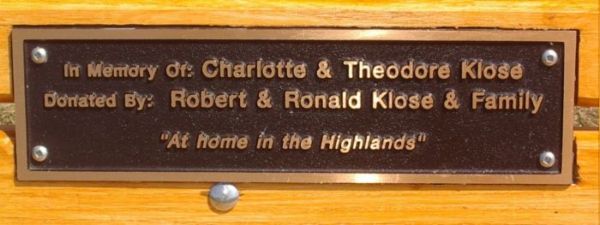
by Robert Klose It is a difficult task for me to encapsulate in a few sentences the lives of my mother and father, Charlotte and Theodore Klose, and at the same time paint a picture of what the Highlands area meant to them and how much they loved being there. Indeed, we decided on dedicating a bench to their memory at Ada Blvd. and 76 Street because they always cherished that stunning view of what must surely be one of the most beautiful cityscapes in Canada. I might add that even during their last illnesses, both of my parents refused to leave their home to live in a seniors' residence somewhere else in the city.
Her father, Dr. Paul Karrer (d. 1933) was a prominent Swiss-born dentist whose office was in the Tegler Building. He and the Karrer family were popular members of the Edelweiss club for many years. Charlotte's stepfather was Herman Brettel, who at age 17 was a First World War pilot with von Richtoven's Flying Circus. Her uncle was Dr. Paul Karrer (Zurich, d. 1971), who won the 1937 Nobel Prize for his groundbreaking research in vitamins. 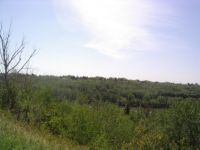 09 and arrived in Canada from Germany in 1926. His first years in Edmonton were a struggle, exacerbated by limited knowledge of English. Eventually, he became co-owner and superintendent of the Norwood Foundry. After retiring in 1972, he started a new career as a professional cabinetmaker, which he very much enjoyed. During this period, he and Charlotte built a cabin on Wabamun Lake where they spent many happy summers. Both were excellent amateur musicians: he played the piano and she the violin. I remember many wonderful musical evenings at home. 09 and arrived in Canada from Germany in 1926. His first years in Edmonton were a struggle, exacerbated by limited knowledge of English. Eventually, he became co-owner and superintendent of the Norwood Foundry. After retiring in 1972, he started a new career as a professional cabinetmaker, which he very much enjoyed. During this period, he and Charlotte built a cabin on Wabamun Lake where they spent many happy summers. Both were excellent amateur musicians: he played the piano and she the violin. I remember many wonderful musical evenings at home. Charlotte and Ted met at the Edelweiss Club and married in 1939. They had two sons: Robert, who now resides in Edmonton, and Ronald, who lives in Brandon. The view from the Klose bench is quite 'over-powering' as you overlook a strong stand of fir and deciduous trees for as far as the eye can see; until looking slightly to the west you are caught up in the ever-growing skyline of the city. The bench is nestled in a quiet spot, although clearly seen from Ada and 75 Street, is still offers a place of solitude. It is hard to tie the east and west views together. The one to the east is accentuated by the stark (Group of Seven?) dead tree; ignoring the tree though, the landscape if peaceful and serene. The lack of a people-watching post is compensated for by the view(s)! A fitting tribute to well loved parents. |
||||||||||||||||||||
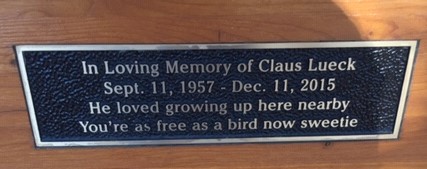
On 2021-02-05 1:27 p.m., Karen my late husband's bench that I had the plaque made for. That's wonderful it made it onto your page and I see that you're wanting more information, so I'll happily oblige! I'm not sure exactly what age he was when they moved in but he did attend Virginia Park Elementary, Highlands Junior High and Eastglen High schools. We went walking, bike riding and driving down Ada Blvd many times and he'd show me where the house used to be. He was sadly, diagnosed with aggressive lung cancer in mid 2015 and as the plaque indicates, passed away December 11th of that year at the age of 58. I thought it would be the perfect tribute to honor his memory. |
||||||||||||||||||||
| THE WESTERGAARD BENCH [Located at 75 Street and Ada Boulevard]
He worked at a flower shop in Edmonton when he first arrived, then went to Uranium City, Saskatchewan to work as a miner. He then returned to Edmonton as a bus driver for ETS, and then finally as an owner operator trucking in Western Canada's oil and gas industry. He met his wife, Lissi – also from Denmark – in Uranium City. He is survived by his wife |
||||||||||||||||||||
| PARKS | ||||||||||||||||||||
|
Park is located on the south side of Ada Boulevard west of 68 Street
Park named after local champion golfer The park which overlooks Highlands Golf Course at 68 Street and Ada Boulevard was officially opened September 18, 2011. More than 100 people were in attendance at the opening with representatives from the City of Edmonton, Councillor Tony Caterina, the
The bronze plaque unveiled at the park lists her many achievements over the last 60 years. Stanhope-Cole was the Edmonton Amateur Champion a staggering 25 times before going on to win the City Senior Championship nine times. Also a six-time City Junior Champion, Stanhope-Cole was named Edmonton's outstanding athlete in 1957 and was the No. 1 ranked amateur player in Canada in 1974 and 1976.
Inducted into the Alberta Sports Hall of Fame for both golf and curling, she also is in the Canadian and Alberta Golf Halls of Fame as well as the Edmonton Sports Hall of Fame. A winner of the Alberta Ladies Amateur 16 times, Stanhope-Cole also has four Alberta Senior titles. In 1980 she gave up competitive golf to devote her time as a volunteer for the Canadian Ladies Golf Association and the Alberta Golf Association. In addition to her golfing success, Stanhope-Cole also skipped three Alberta Championship Teams, placed
Long associated with the Highlands Golf Club and a long-time resident of the neighbourhood, Stanhope-Cole has brought prestige and attention to the club and the community though her accomplishments and support of amateur sport.
Stanhope-Cole still golfs a few times a week at Highlands, walking the Highlands and enjoying the course she has played for the past 60 seasons. Please take time to drop by the park , admire the view and, while reading the plaque marvel over the golfing accomplishments of Betty Stanhope-Cole
Inducted into the Alberta Sports Hall of Fame for both golf and curling, she also is in the Canadian and Alberta Golf Halls of Fame as well as the Edmonton Sports Hall of Fame. A winner of the Alberta Ladies Amateur 16 times, Stanhope-Cole also has four Alberta Senior titles. In 1980 she gave up competitive golf to devote her time as a volunteer for the Canadian Ladies Golf Association and the Alberta Golf Association. In addition to her golfing success, Stanhope-Cole also skipped three Alberta Championship Teams, placed
Long associated with the Highlands Golf Club and a long-time resident of the neighbourhood, Stanhope-Cole has brought prestige and attention to the club and the community though her accomplishments and support of amateur sport.
Stanhope-Cole still golfs a few times a week at Highlands, walking the Highlands and enjoying the course she has played for the past 60 seasons. Please take time to drop by the park, admire the view and, while reading the plaque, marvel over the golfing accomplishments of Betty Stanhope-Cole
The Edmowood sign appeared on April 1, 2021. It was removed before Tidridge could photograph it. The article and photograph are from the Edmonton Journal and Google Passers-by check out an EDMOWOOD sign that popped up in Betty Stanhope-Cole Park, near 69 Street and Ada Boulevard, in Edmonton Wednesday March 31, 2
021. PHOTO BY DAVID BLOOM /Postmedia
|
||||||||||||||||||||
|
(7707 - 112 Avenue NW covering 1.33 ha)  Memorial unveiled (possibly the Edmonton Journal August 2, 1960 from the City of Edmonton Archives) A 16-foot memorial honoring the late Howard Stutchbury, who, in 1902, helped found the Edmonton musical Festival, and in 1946 founded the Alberta Safety Council, was unveiled Saturday afternoon. Below, Miss Audrey Stutchbury, his daughter, unveils the memorial at Stutchbury Park, 112 Ave and 76 St. Looking on are Rev. Ray Leppard, of Redwater; James Falconer, chairman of the city's landmarks and archives committee; Mayor Roper; Garnet Kyle, city archivist; Hon. J. Percy Page, lieutenant-governor; Hon. R.D. Jorgenson, provincial welfare Minister, and Major Elmyr Stutchbury, son of Mr. Stutchbury
STUTCHBURY MEMORIAL UNVEILED
Tribute to a man prominent in cultural activates and safety education was paid Saturday afternoon by government, civic and Alberta Safety Council officials, as the Howard Stutchbury Memorial, 112 Ave. and 76 St. was unveiled. In a brief message before the memorial was unveiled by Miss Audrey Stutchbury, daughter of the late Mr. Stutchbury, Hon. J. Percy Page, Lieutenant-Governor of Alberta, called Mr. Stutchbury, a "servant of the public and a gentlemen in the true sense of the word". Officials pay tribute memorial was unveiled by Miss Audrey Stutchbury, daughter of the late Mr. Stutchbury, Hon. J. Percy Page, Lieutenant-Governor of Alberta, called Mr. Stutchbury, a "servant of the public and a gentlemen in the true sense of the word". Mayor Roper said Mr. Stutchbury did as much as anyone in Alberta to promote culture in the province. He added that city council was glad to provide land named Stutchbury Park, the three acre park in which the memorial is located.
The final speaker, Brig. J.C. Jefferson, chairman on the Alberta Safety Council, said that Mr. Stutchbury was an "inspiring leader: nothing was to much trouble or too difficult from him. He lived the philosophy of being his brother's keeper." Rev. Ray Leppard of Moore Memorial United Church in Redwater delivered the invocation. James Falconer, chairman of the city's landmark and archives committee, introduced the speakers. Also attending the ceremony were Garnet Kyle, city archivist, Major Elmyr Stutchbury and Ewert Stutchbury, sons of Howard Stutchbury. A native of England, Stutchbury came to Edmonton in 1902. Along with Vernon Barford, he founded the Edmonton Musical Festival in 1908, and with Mr. Barford, was the originator of the Canadian festival movement. A trade commissioner for the Alberta government from 1921 until 1937, he founded the Alberta Safety Council in 1946, and served as managing director of the council until his death in 1957. The memorial is a joint effort of the Edmonton Kiwanis Club, the city landmark and archives committee and the Alberta Safety Council. The plaque, provided by the Kiwanis reads: "Howard Stutchbury, 1874-1957. Devoted servant of the community at large. Remembered for his contribution to the church, the arts, veterans' affairs, industrial development and as a pioneer of the public accident prevention movement." "He gave unsparingly of himself to ensure that safety education would be available to all. Founder of the Alberta Safety Council 1946". THE PARK The Park has approximately 86 trees planted; these are willow, spruce, Russian olive, pine, mountain ash, mayday, maples, linden, larch and green ash. |
||||||||||||||||||||
| e-mail : Care to comment? John Tidridge |
|
© All Rights Reserved by John Tidridge, Edmonton, Alberta, Canada |
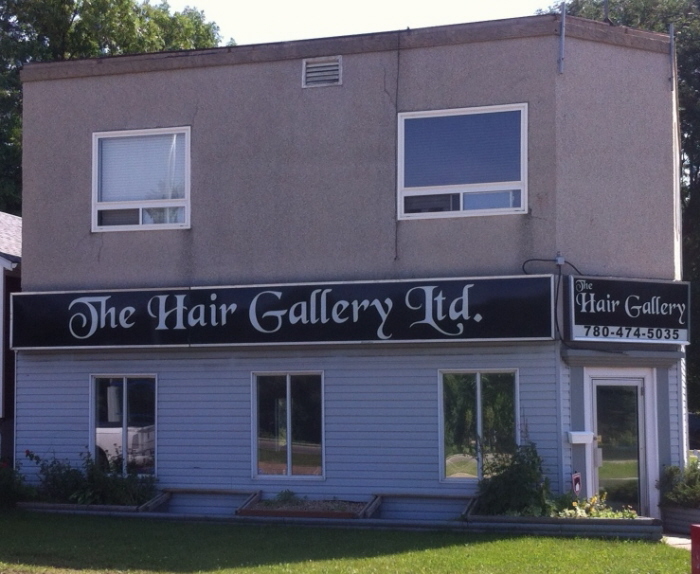
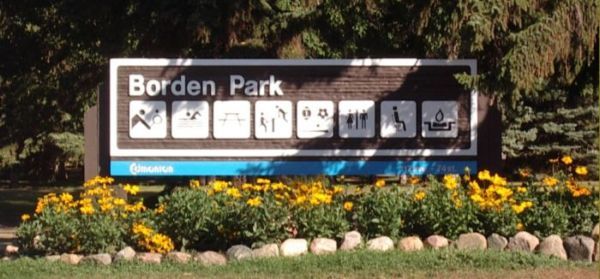
.jpg) zoo, which included a monkey house, a bear pit, and a coyote cage, among other animals. Construct
zoo, which included a monkey house, a bear pit, and a coyote cage, among other animals. Construct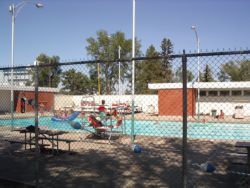 ion on a band shell began in 1955, and the park became a popular destination for music lovers to enjoy a sunny Sunday afternoon listening to one of the many area bands, from school bands to local music scene favorites Tacoy Ryde.
ion on a band shell began in 1955, and the park became a popular destination for music lovers to enjoy a sunny Sunday afternoon listening to one of the many area bands, from school bands to local music scene favorites Tacoy Ryde.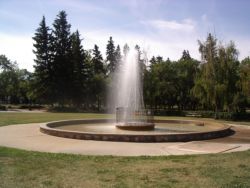 article published on September 20, 1924: "The whole pool radiates good humor and innocent enjoyment, and is a fitting reply to those prudes who elevate their eyes to high heaven and deplore the 'wickedness' embodied in mixed bathing." The East End swimming pool, the article continued "will go a long way towards building up a healthy, vigorous, graceful and clean-minded womanhood." In addition to the pool, the park was for many years home to the Edmonton Zoo. Among its first animals was a bear cub named Louise. As well, there were two buffalo, two elk, monkeys, coyotes and peacocks. Other park attractions were a tea room and rides, including a carousel, a giant roller coaster and a tunnel-of-love. The latter, in a bow to decorum, was known as "the Old Mill."
article published on September 20, 1924: "The whole pool radiates good humor and innocent enjoyment, and is a fitting reply to those prudes who elevate their eyes to high heaven and deplore the 'wickedness' embodied in mixed bathing." The East End swimming pool, the article continued "will go a long way towards building up a healthy, vigorous, graceful and clean-minded womanhood." In addition to the pool, the park was for many years home to the Edmonton Zoo. Among its first animals was a bear cub named Louise. As well, there were two buffalo, two elk, monkeys, coyotes and peacocks. Other park attractions were a tea room and rides, including a carousel, a giant roller coaster and a tunnel-of-love. The latter, in a bow to decorum, was known as "the Old Mill."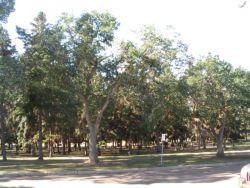 The massive roller coaster, built in 1915 at a cost of $15,000, was dismantled in 1935 and its timbers salvaged by a lumber company. Borden Park has continued to be an important outdoor venue for Edmontonians, though the attractions offered have changed somewhat since its establishment almost a century ago. In the late 1970s, the park's bandshell hosted performances by two of the city's new-wave rock bands, The Silent Movies and Smarties.
The massive roller coaster, built in 1915 at a cost of $15,000, was dismantled in 1935 and its timbers salvaged by a lumber company. Borden Park has continued to be an important outdoor venue for Edmontonians, though the attractions offered have changed somewhat since its establishment almost a century ago. In the late 1970s, the park's bandshell hosted performances by two of the city's new-wave rock bands, The Silent Movies and Smarties.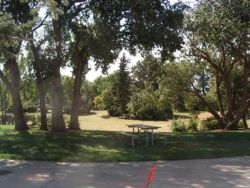 tennis on the courts just north of the diamond. During the summer the "Corporate Games" make use of the spacious area. Water plays a part in the park, with a paddling pool near the bandstand; a fountain in an area south of the swimming pool, and yet another paddling pool
tennis on the courts just north of the diamond. During the summer the "Corporate Games" make use of the spacious area. Water plays a part in the park, with a paddling pool near the bandstand; a fountain in an area south of the swimming pool, and yet another paddling pool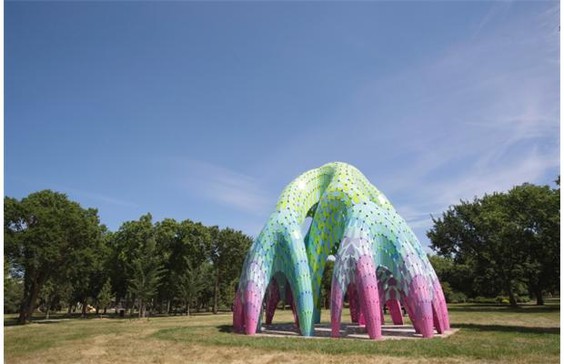
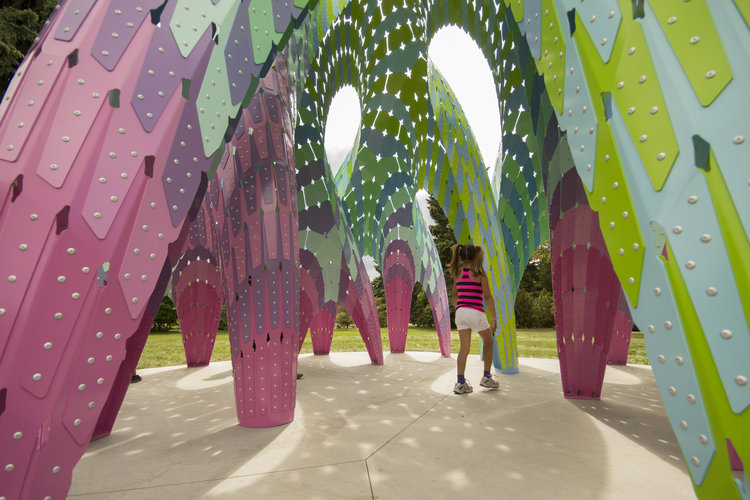
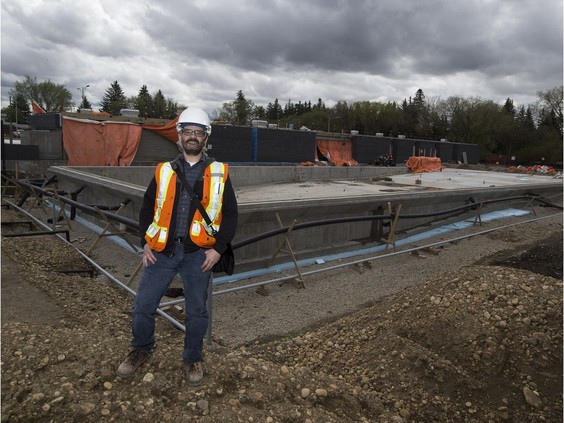
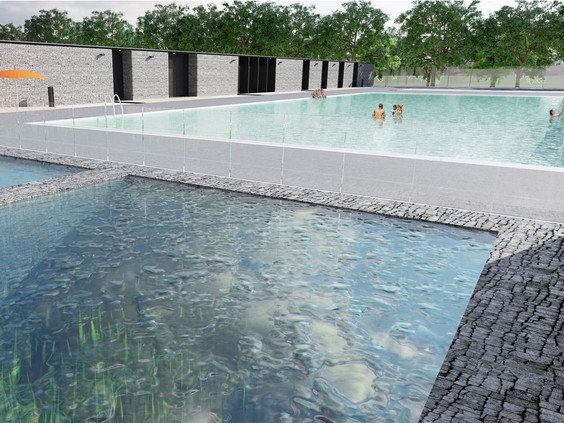
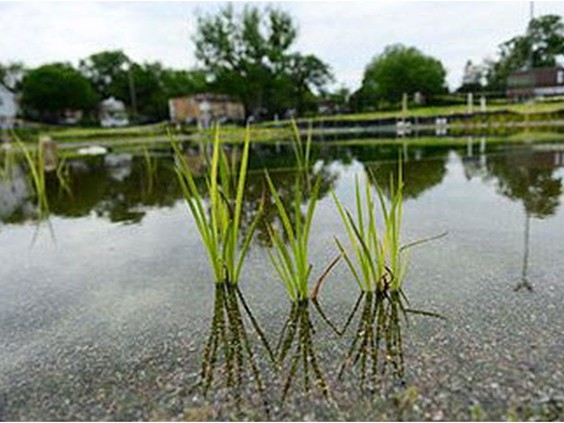
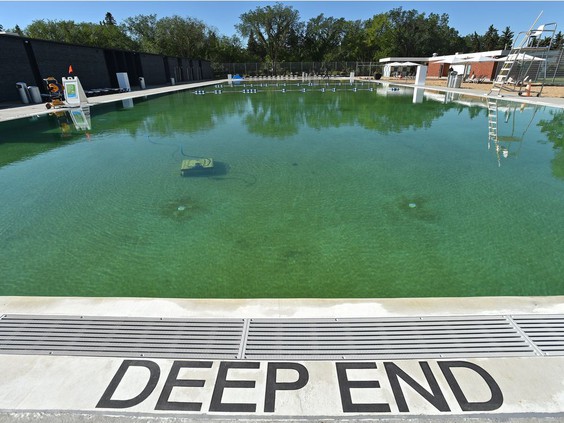 It doesn’t smell like bleach. It doesn’t taste like pickle brine. It feels soft. It feels, in a strange way, more “real” than the chemically-treated water of a typical public pool.
It doesn’t smell like bleach. It doesn’t taste like pickle brine. It feels soft. It feels, in a strange way, more “real” than the chemically-treated water of a typical public pool.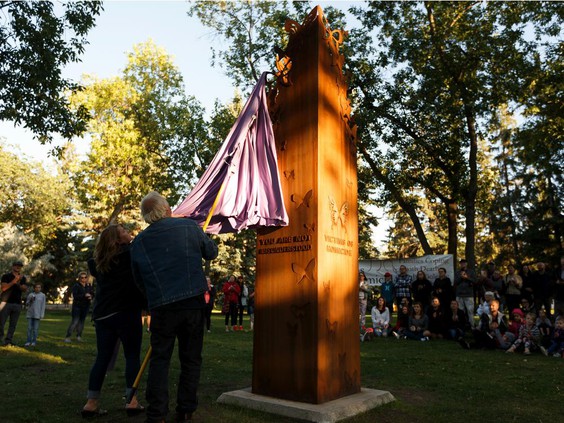
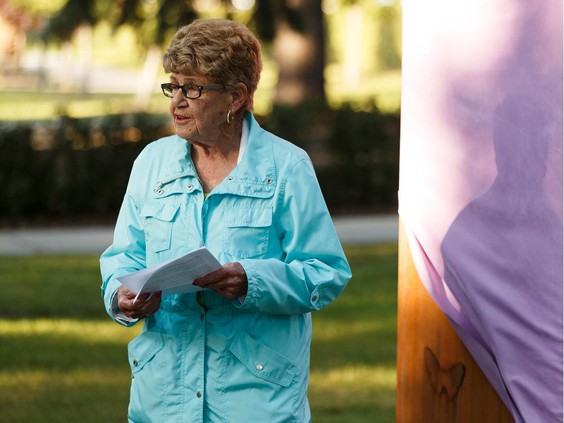
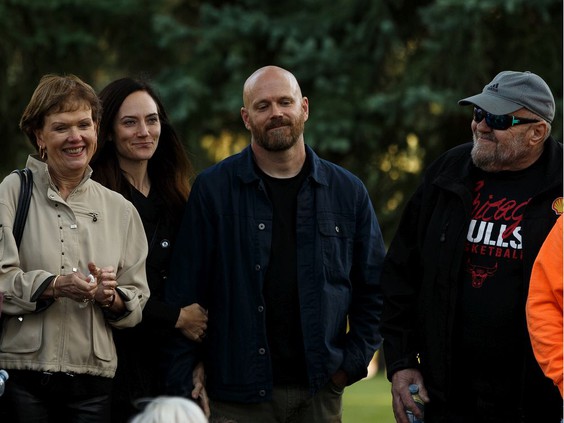
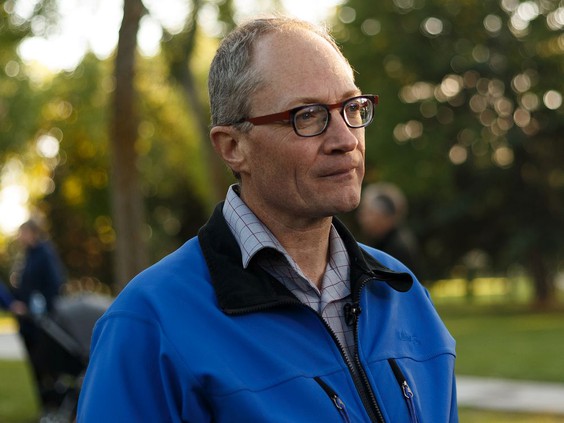
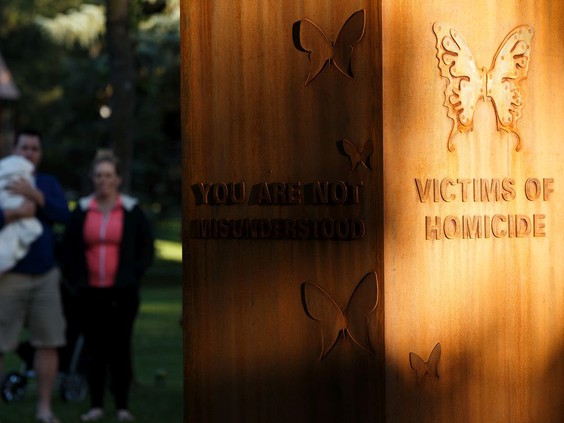
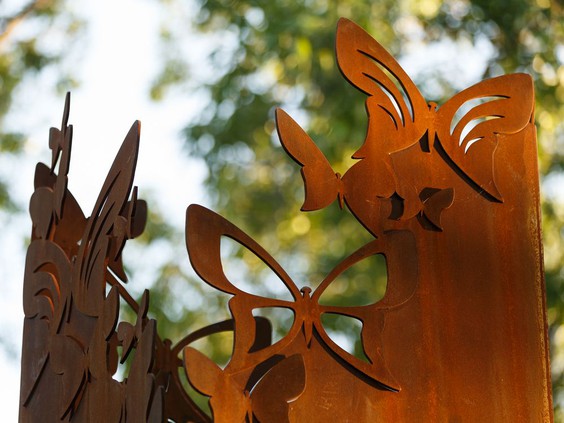
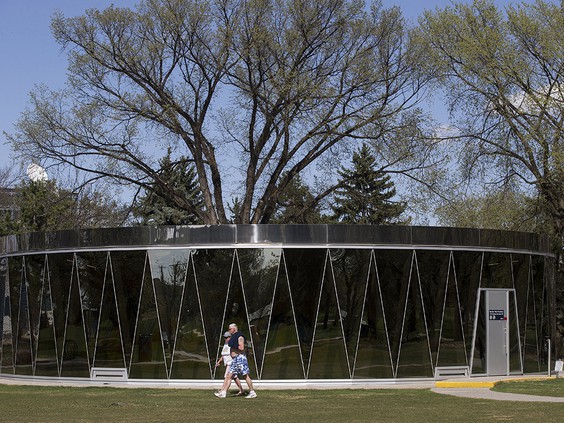
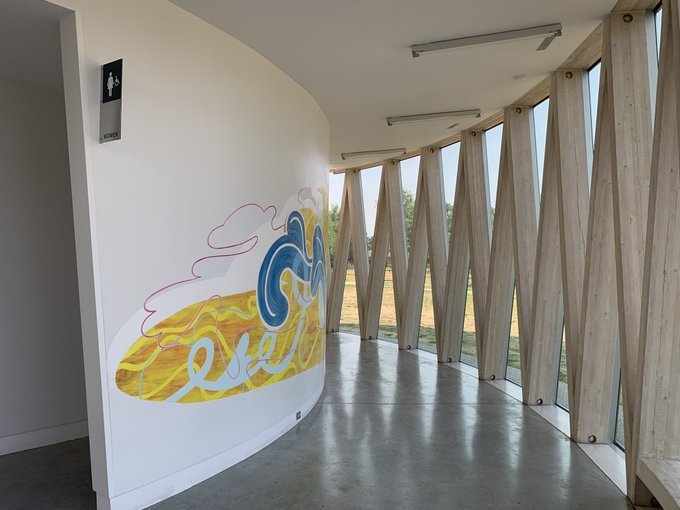 Inside, there’s a seating area with bright white tables and chairs, and a vibrant and colourful mural wraps the interior between the men’s and women’s rooms. You will feel like a monarch on the porcelain throne inside the tidy and accessible bathrooms wiped clean by dedicated staff. In the announcement, Cintas notes some hands-free elements and a stainless-steel trough-style sink that prevents water from splashing on the floor.
Inside, there’s a seating area with bright white tables and chairs, and a vibrant and colourful mural wraps the interior between the men’s and women’s rooms. You will feel like a monarch on the porcelain throne inside the tidy and accessible bathrooms wiped clean by dedicated staff. In the announcement, Cintas notes some hands-free elements and a stainless-steel trough-style sink that prevents water from splashing on the floor.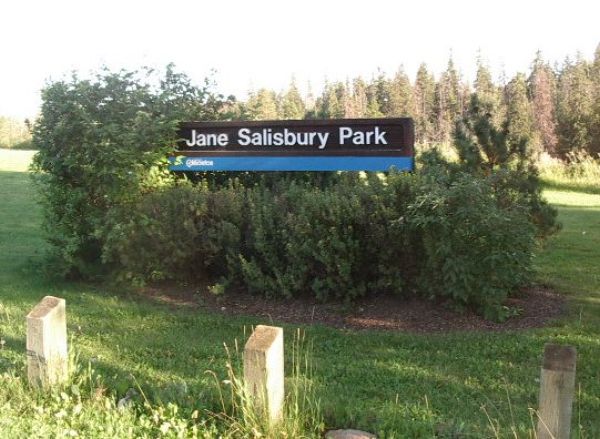
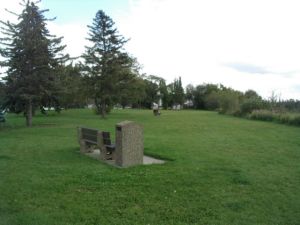 It's amazing how one can live in an area for over 40 years and still not know the existence of everything nearby. Such is the case with the Jane Salisbury Park. It cannot be seen from any road or street. The only people who would be aware of it are those whose homes abut the lane around the park. It is truly secluded. Perhaps the residents will not be happy to have it advertised!
It's amazing how one can live in an area for over 40 years and still not know the existence of everything nearby. Such is the case with the Jane Salisbury Park. It cannot be seen from any road or street. The only people who would be aware of it are those whose homes abut the lane around the park. It is truly secluded. Perhaps the residents will not be happy to have it advertised!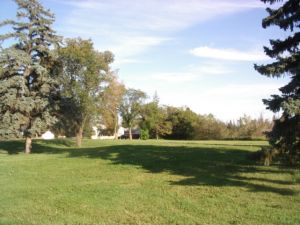 , Mrs. Salisbury was chairwoman of the group's cottages project. The duplexes, located at the current site of her park from 1949 to 1987, were built to house elderly women with a limited income.
, Mrs. Salisbury was chairwoman of the group's cottages project. The duplexes, located at the current site of her park from 1949 to 1987, were built to house elderly women with a limited income. 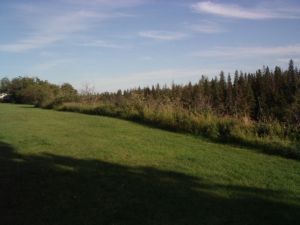 Other Park Named: While all of last weekend's park-opening hoopla involved the one created in honor of slain police Const. Ezio Faraone, a ceremony on Saturday that saw one of the city's longtime volunteer workers honored with the dedication of a park in her name went relatively unnoticed.
Other Park Named: While all of last weekend's park-opening hoopla involved the one created in honor of slain police Const. Ezio Faraone, a ceremony on Saturday that saw one of the city's longtime volunteer workers honored with the dedication of a park in her name went relatively unnoticed. 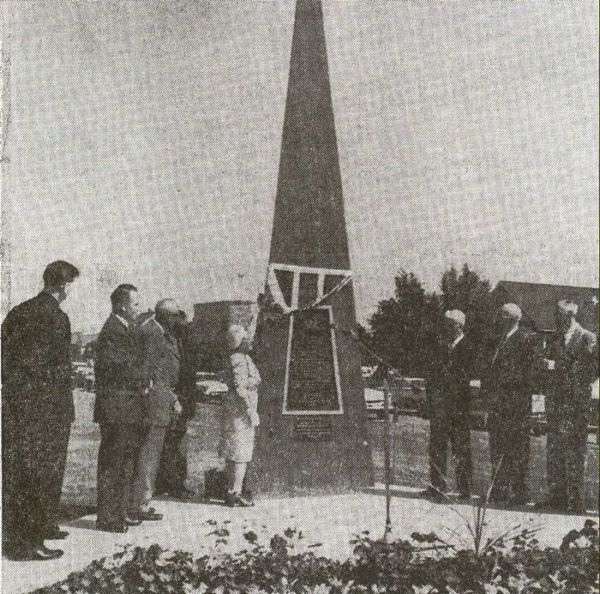
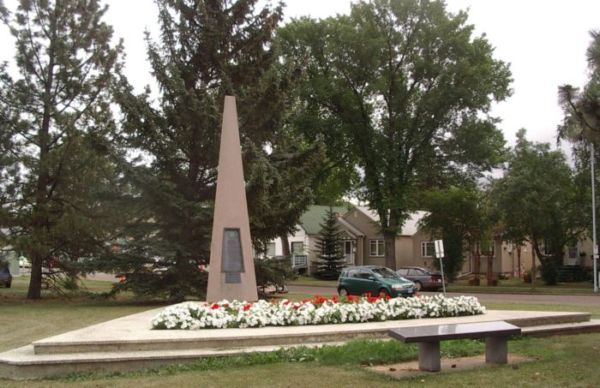
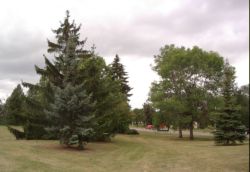 Mr R.D. Jorgenson called Mr. Stutchbury a man "who believed in Christian principles, and in the dignity of man", and "felt impelled to give of himself in the interest of other people."
Mr R.D. Jorgenson called Mr. Stutchbury a man "who believed in Christian principles, and in the dignity of man", and "felt impelled to give of himself in the interest of other people."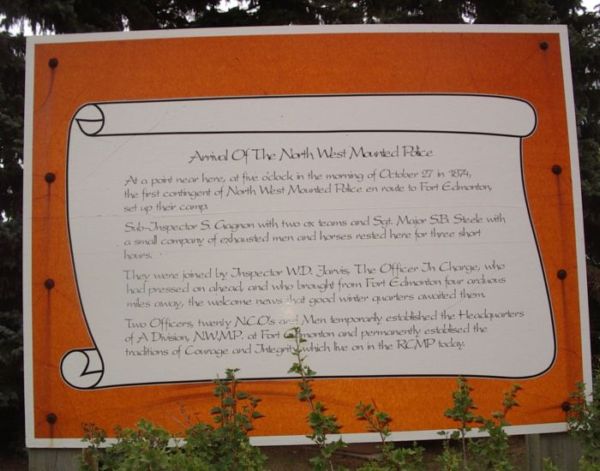 Now be honest, you have never even noticed the sign, even though it's clearly visible, as you drive east on 112 Avenue and as you near 76 Street. Here is the story of the sign.
Now be honest, you have never even noticed the sign, even though it's clearly visible, as you drive east on 112 Avenue and as you near 76 Street. Here is the story of the sign. 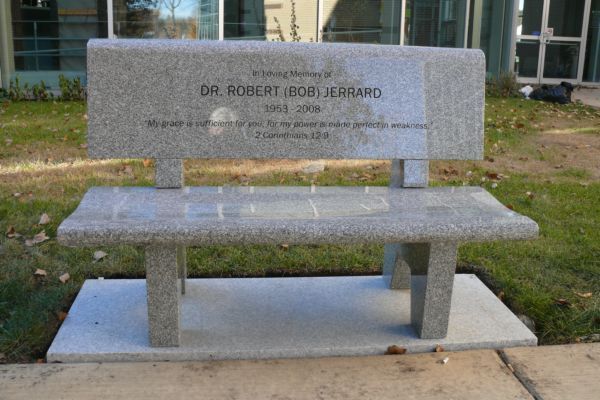 Dr. Jerrard, born June 22, 1953 in Toronto, Ontario, passed away at home in Edmonton on Sunday December 28, 2008 after a two and a half year courageous battle with cancer.
Dr. Jerrard, born June 22, 1953 in Toronto, Ontario, passed away at home in Edmonton on Sunday December 28, 2008 after a two and a half year courageous battle with cancer.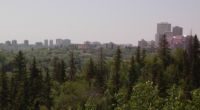 Between them, my parents lived in the area for approximately 134 years. My mother was born in 1917, and except for ten years in the 1940's when the Klose family moved to Vancouver, she lived here all her life. She was raised in the house her family built at 7511 112 Avenue. At that time, it was one of the few houses in the neighbourhood.
Between them, my parents lived in the area for approximately 134 years. My mother was born in 1917, and except for ten years in the 1940's when the Klose family moved to Vancouver, she lived here all her life. She was raised in the house her family built at 7511 112 Avenue. At that time, it was one of the few houses in the neighbourhood.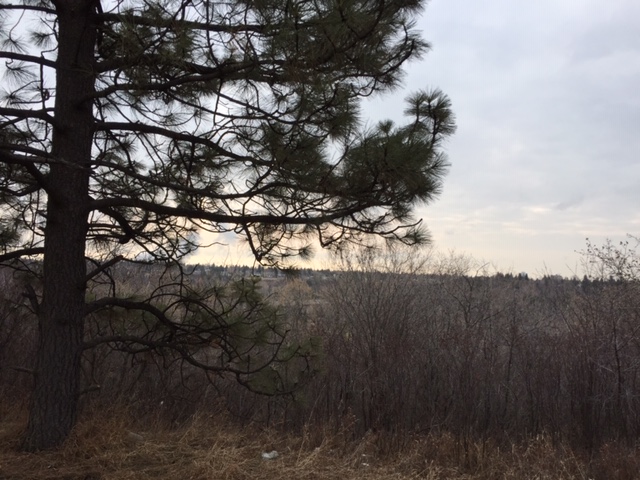
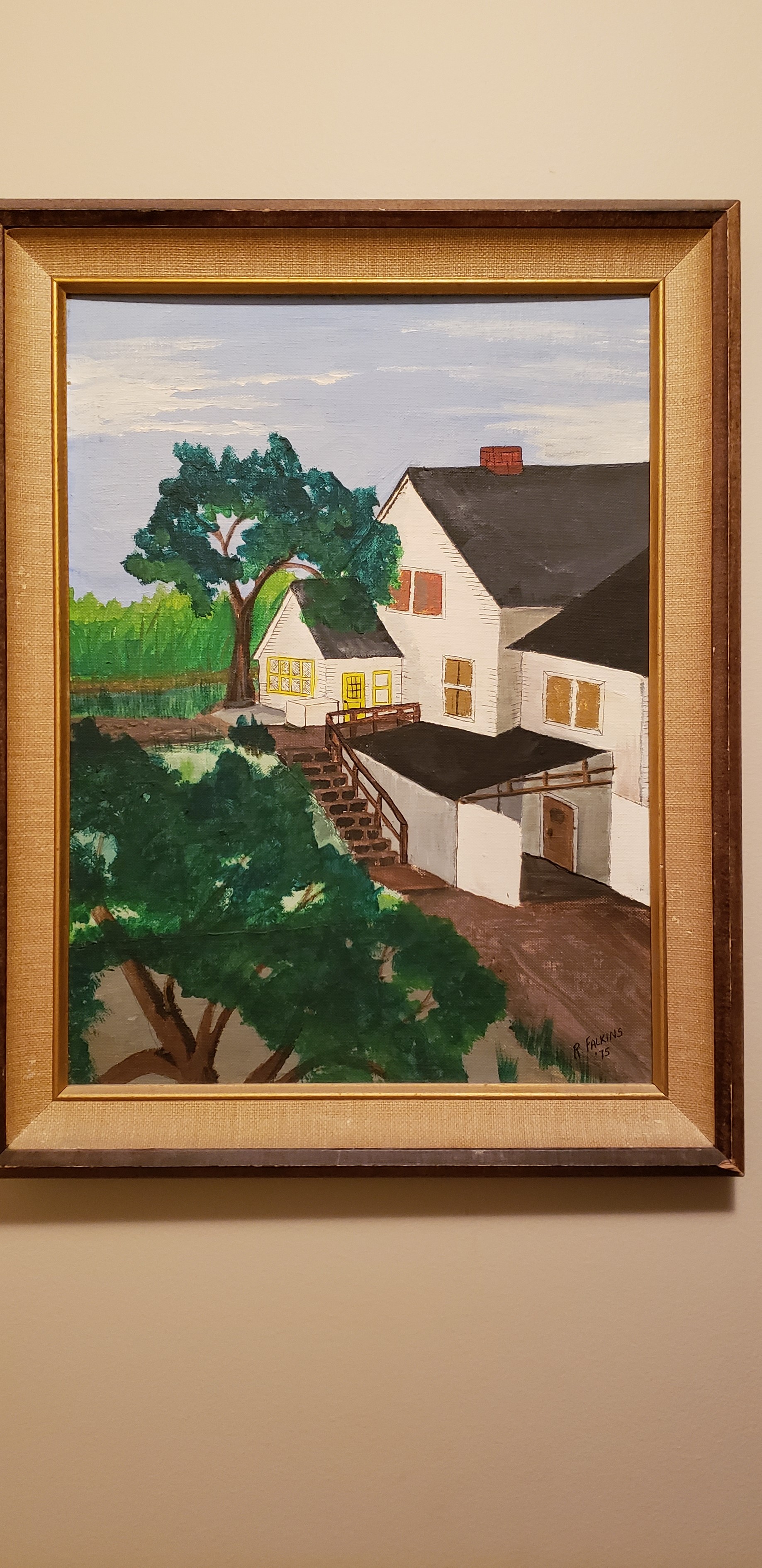 t to Highlands golf course. It was one of only three there that were owned by the City of Edmonton and whom they rented from.
t to Highlands golf course. It was one of only three there that were owned by the City of Edmonton and whom they rented from..jpg)
 By Ted Smith (used with permission)
By Ted Smith (used with permission)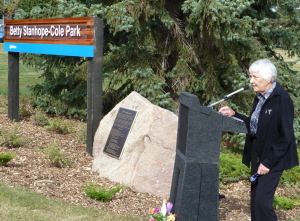 Highlands Golf Course president Mark Wenger, the Honourable Allan H. Wachowich, the former Chief Justice, and Karen Rackel, the current president of the Royal Canadian Golf Association, all paying tribute to Betty Stanhope-Cole for her lifetime of accomplishments in honour of her golf and curling achievements.
Highlands Golf Course president Mark Wenger, the Honourable Allan H. Wachowich, the former Chief Justice, and Karen Rackel, the current president of the Royal Canadian Golf Association, all paying tribute to Betty Stanhope-Cole for her lifetime of accomplishments in honour of her golf and curling achievements.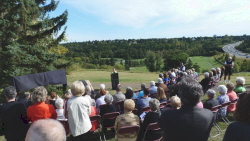 She competed on Canada's World Amateur Team on three occasions (1964, 1974, 1976) and was a member of our Commonwealth Team in 1971. Nationally, she won the 1956 Canadian Junior Girls Championship, the 1957 Canadian Ladies' Championship and the 1967 Canadian Ladies Close Championship.
She competed on Canada's World Amateur Team on three occasions (1964, 1974, 1976) and was a member of our Commonwealth Team in 1971. Nationally, she won the 1956 Canadian Junior Girls Championship, the 1957 Canadian Ladies' Championship and the 1967 Canadian Ladies Close Championship.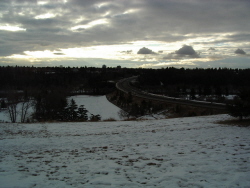 second in the 1978 Lassie and won 13 zone and Edmonton Championships.
second in the 1978 Lassie and won 13 zone and Edmonton Championships.